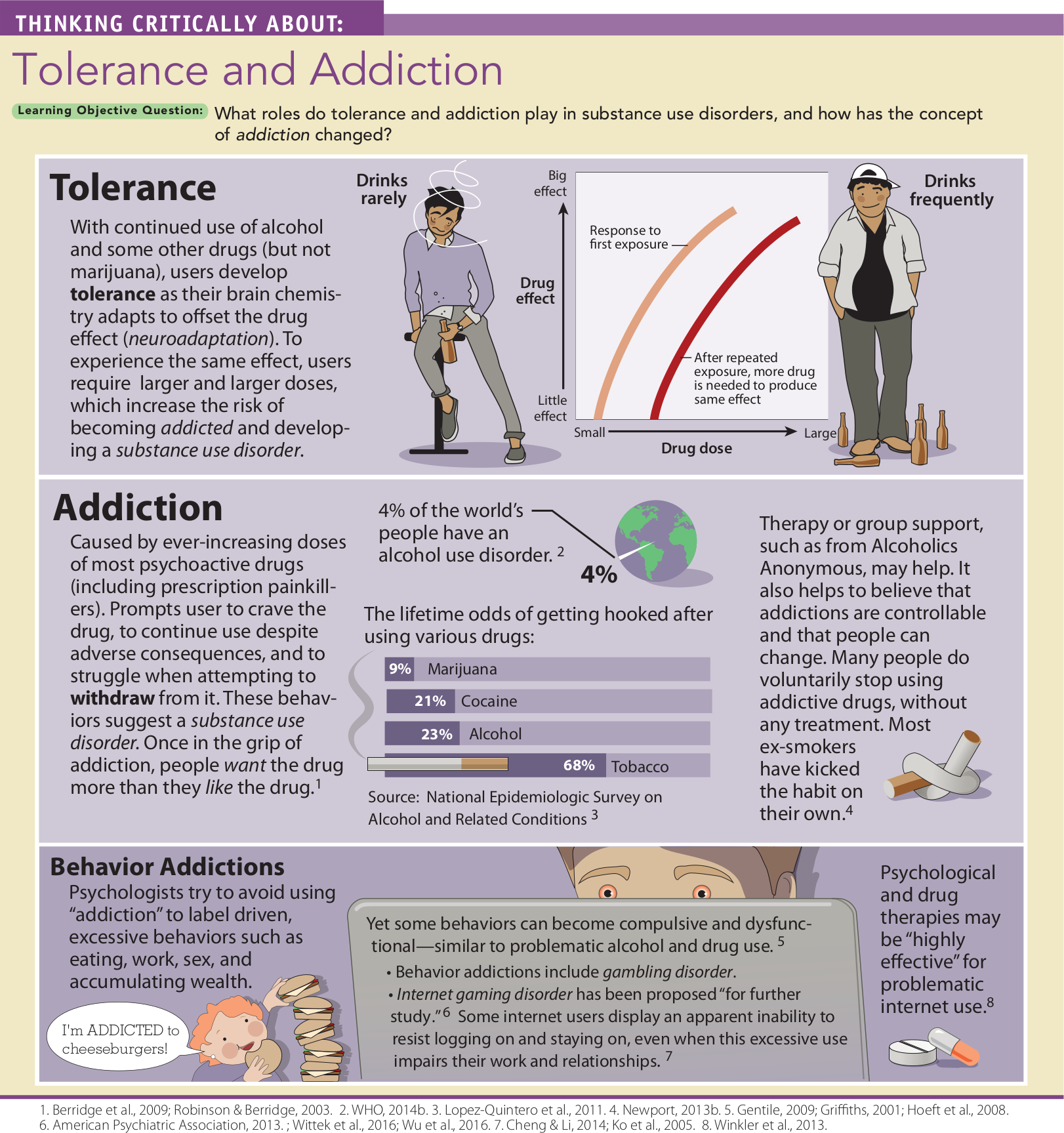Chapter 4. Tolerance and Addiction
Infographic
Infographic Activity
by David Myers and Nathan DeWall
true
true
Thinking Critically About: Tolerance and Addiction
Regular substance users develop tolerance, which contributes to addiction and disordered use of the substance. Other people may develop behavior addictions.
Quiz
Quiz
1.
daQ44wX36ZPRRN9q/i59s2xeNvixIxwOfuPZqgfuHsFAQ4pANF9yzPdPw0FUjgUcgyA6m0kKfuqF0Zu7rSHEjXa3IBJygAp29mb6jw==The brain tends to adapt to repeated drug exposure, requiring greater doses to produce the same effect—a phenomenon called tolerance.
2.
yjYpOio4cww6dEJAOk2oir36JZeyb39sx7ivtxWZXL7dKQ+Z+GwB4dV07SaM6tdgc2i6Ar9CoAg=An addiction, often a substance use disorder, occurs as users come to tolerate a substance, crave more of it despite harm, and struggle to withdraw from use.
3.
h2cnCWL9eWSwTF+4HyLhqbDsN+bMT101haX51bHR49dZaQCIfYqSEupiOJ1ZHrFjKgcRC4wJV0uKA0vN+0AN8No7fLWCGtZdyKD4SY0zouI=Some behaviors, such as gambling or internet use, can become compulsive and harmful and may develop into addictions. But most behaviors are not addictive.
